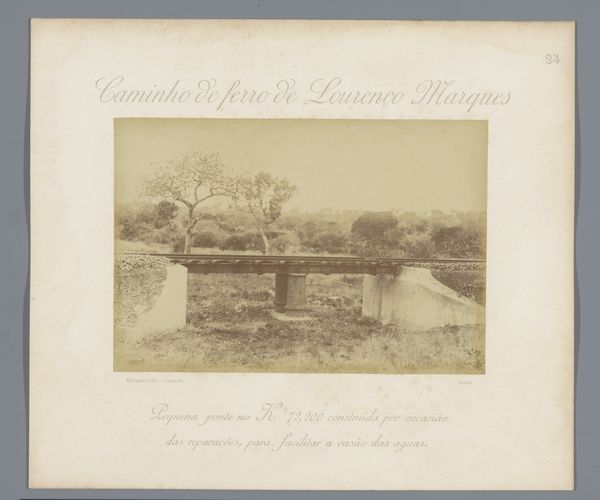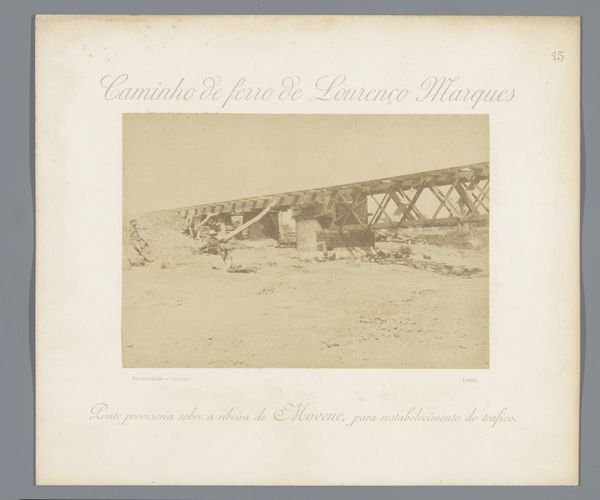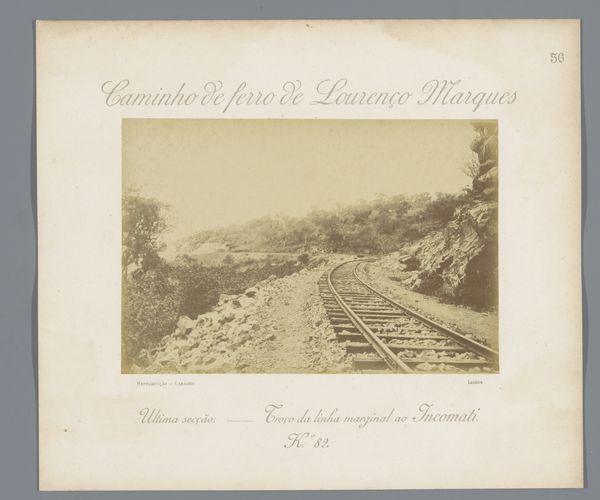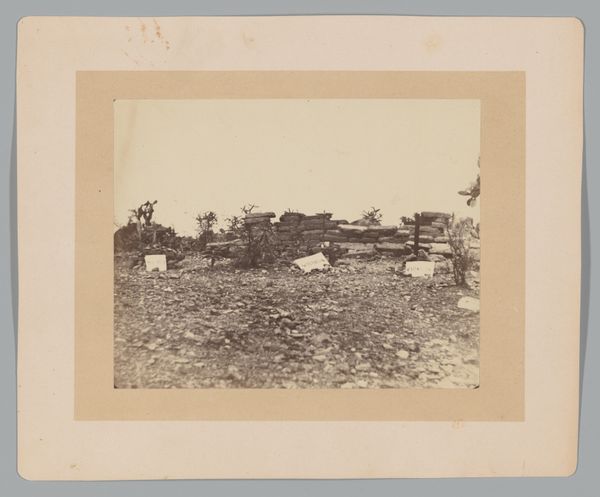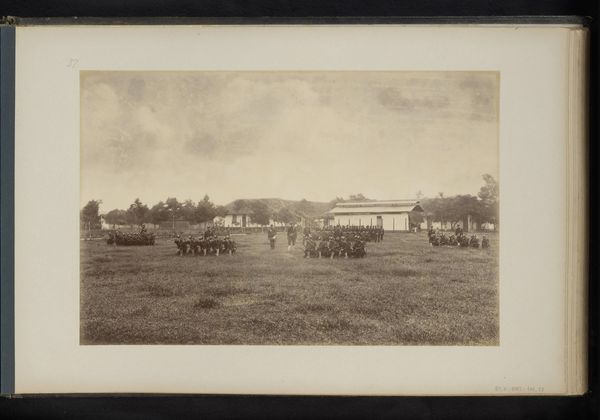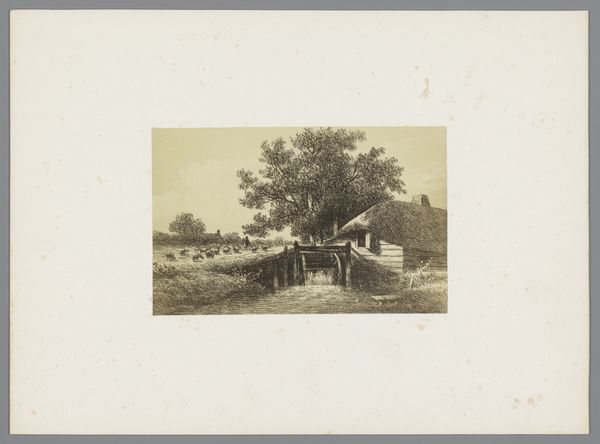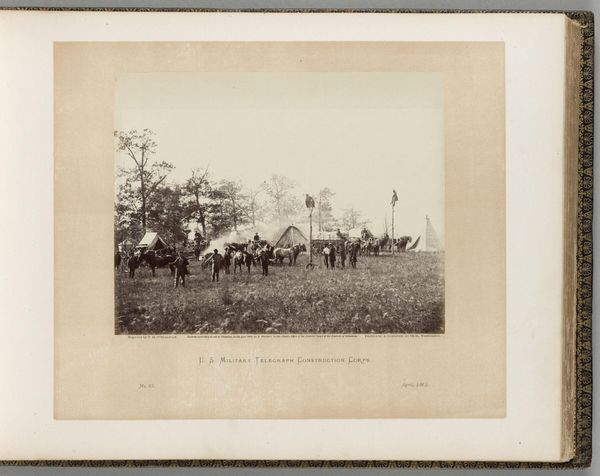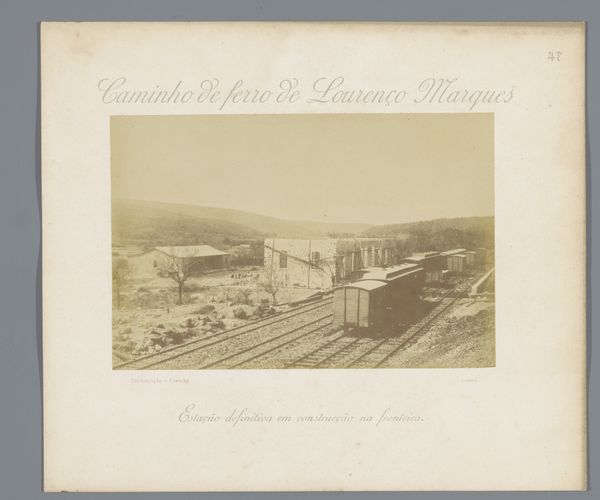
photography, gelatin-silver-print
#
landscape
#
photography
#
orientalism
#
gelatin-silver-print
#
realism
Dimensions: height 110 mm, width 165 mm
Copyright: Rijks Museum: Open Domain
Curator: This gelatin-silver print, "Brug over de rivier Bandanine Mozambique," created around the 1880s by Manuel Romão Pereira, presents a landscape with a bridge dominating the scene. It's strikingly sepia-toned, casting an almost ethereal glow. Editor: It's a rather melancholic scene, wouldn’t you say? The desaturated palette coupled with the lonely figures at either end of the bridge evoke a profound sense of isolation and perhaps speaks to the artist's alienation in that space and time. Curator: From a formal perspective, the bridge creates a strong horizontal line, dissecting the composition into two distinct zones—the wild, untamed foreground, and the softer, receding background of trees against the pale sky. Note how Pereira balances light and shadow, enhancing the depth and texture. Editor: Right, and what the artist does by drawing us in like that forces one to consider how this 'engineered' bridge impacts the local communities and environment of 19th-century Mozambique, where Portugal was attempting to solidify its colonial grip. Who built this bridge? What lives were disrupted? These become essential questions. Curator: Certainly, one cannot ignore the socio-political implications. But the image also presents a compelling study in perspective, texture, and contrast. Observe how the photographer used a long exposure to capture the subtle details of the grasslands. The linear precision of the bridge sharply contrasts with the organic forms around it. Editor: Exactly! It's about that opposition! It screams of the colonial narrative being imposed onto an indigenous landscape. The very act of photographing, archiving, and documenting was a form of appropriation, solidifying a Eurocentric view and projecting power. It reminds one of Said's concept of Orientalism. Curator: A fair point. Regardless, the print displays an exquisite technical control and a refined compositional sense. The way Pereira manipulated light to achieve such textural complexity is remarkable in itself. It is a study in the visual language of photography from that era. Editor: Indeed, the artistry cannot be denied. And through the historical lens of power and representation, a new significance of that art comes to light. It really reveals photography's inherent role in shaping perceptions and solidifying unequal power dynamics across continents.
Comments
No comments
Be the first to comment and join the conversation on the ultimate creative platform.

